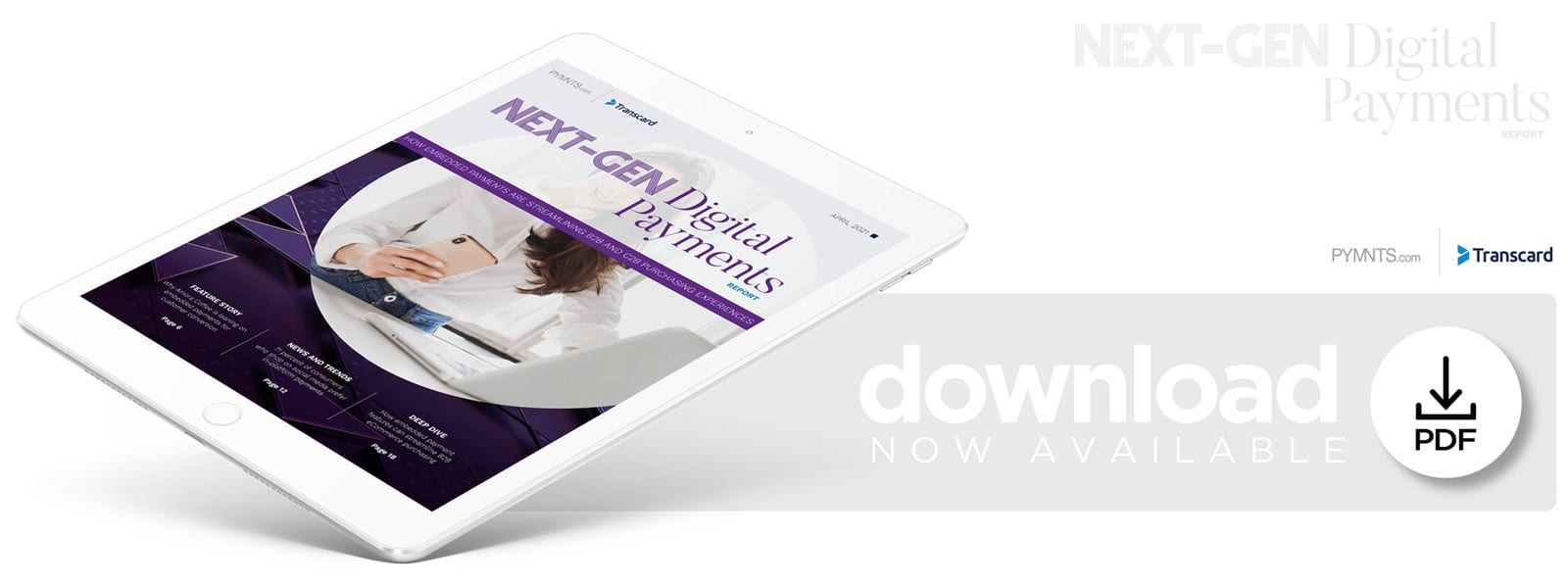Why Amora Coffee Is Leaning On Embedded Payments For Customer Conversion

Embedded payments and one-click ordering have been staples of eCommerce giant Amazon for years. Consumers who shop online after the pandemic has subsided will not be expecting to see this type of invisible, embedded payment experience just on Amazon, however — they will expect to see it everywhere, according to Jim Fosina, founder and CEO of gourmet coffee and tea retailer Amora Coffee.
“When the pandemic hit, so many people turned to Amazon when you could not go out or you could not even get to the grocery store,” he said in a recent PYMNTS interview. “Then more and more people who were not even used to buying online started to buy online, and the one-click ordering process has just penetrated and infiltrated [consumers’ purchasing] behavior so that no matter where they [shop], whether it is [with] Amazon or not, their expectation now is a frictionless payment process. They do not want to have to go get their credit card and enter [the number] into an order form. They would much rather have one-click ordering, whether that is [through] Shop Pay or their Apple Pay or PayPal [wallets]. The credibility that comes [with] those names and those types of payments reassures our consumers.”
Amora Coffee recently expanded its payment options to include all three, beginning earlier in the year with its launch of Shop Pay, an accelerated checkout experience supported by Shopify that allows consumers to save payment information for speedier checkout. It also began offering Apple Pay this past month and supports traditional credit card options as well to help meet consumers’ changing payment preferences. Allowing customers this type of one-click purchasing ability is quickly becoming essential to competing in the eCommerce space, especially as more consumers grow comfortable with digital ordering in the wake of the ongoing global health crisis.
The Embedded Payments Age
The pandemic has made consumers more at ease with eCommerce, meaning that digital retailers vying for trade in an increasingly saturated field cannot afford to have too many frictions in their payment experiences. This is especially crucial for first-time customers, who are all too willing to abandon their carts at the slightest hint of frustration — and consumers now view entry of their card or payment details as friction.
Embedded payments seem to be gaining traction: 20 percent of first-time buyers are already paying via Shop Pay at Amora Coffee, Fosina said, and approximately 25 percent to 30 percent of first-time buyers click through their purchases via PayPal. This could represent a key shift not just for payments but also for the retail world, he added, putting more pressure on merchants to get the payment experience exactly right.
“We have really come a long way to what I [would] consider one-click purchase now, based on what Amazon has really trained our consumer buying audiences to be [like],” he said. “So the entire [burden] of payments has shifted to the marketer versus the consumer. In the past, it was up to the consumer to make sure that they paid, and now, for the marketer, it is essential that we give them as many easy payment options as possible.”
Fosina said Amora Coffee is seeing a higher retention rate from consumers who are using PayPal, Shop Pay or other similar methods when fulfilling their coffee orders. He believes consumers are coming to regard these types of digital wallets with a higher level of trust as the sight of them becomes more familiar when they go to buy.
“For example, with PayPal, the consumer is actually entering into a quasi-agreement with PayPal that says, ‘Yes, this is what I want to do. I want to sign up for repeat purchases. Please go ahead — you have my permission,’” Fosina said. “That in itself feels more secure for a consumer as opposed to giving authorization to just recharge their card. So we believe that consumers are converting at a higher rate because they have a higher level of comfort.”
This trend could significantly impact how consumers approach not just payments but also shopping over the coming years. Consumer trust in particular payment methods could open up eCommerce to even more competition, notably from social media platforms, where shopping is growing more popular.
Payments’ Invisibility And The Social Media Factor
The migration toward embedded payments is occurring as social media sites such as Facebook and Instagram also look to play a bigger role in commerce by offering consumers the ability to shop favored brands on a platform where invisible payments are already baked into the user interface. Amora Coffee does not yet have social media payments on its strategic roadmap, Fosina said, but he believes their role in the future of retail should not be left unexamined.
“I envision a world where I think every platform is going to try to turn into a marketplace where transactions can take place,” Fosina said. “I think these platforms are continuously going to offer these options, because they too want to provide a frictionless process for their followers, and it is going to become a significant revenue generator for them. … It is the Visas and the Mastercards and the American Expresses of the world that are really in jeopardy of losing some market share … at the point of transaction. … Even though their cards may be backing up or powering these new platforms, there is going to be, at some point, some … breaking point as to how much can be spent in fees and percentages for processing payments. But I think everybody is going to be looking to get into the business.”
Consumers are unlikely to revert to their pre-pandemic payment preferences or behaviors, making it vital for retailers to stay abreast of how embedded payments are developing more broadly on such platforms. Merchants will have to pay careful attention to consumers’ use of these payment methods over the next several years in order to keep up.

